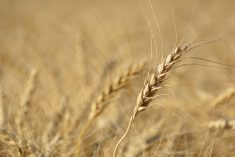Drought and high feed prices prompt producers to reduce herds, which is expected to further tighten livestock supplies
CHICAGO (Reuters) — U.S. consumers grappling with soaring inflation face more pain from high beef prices as ranchers reduce their cattle herds due to drought and lofty feed costs.
Those decisions will tighten livestock supplies for years, economists said.
The decline in cattle numbers, combined with stiff costs for other production expenses, illustrate why a recent reduction in grain prices may not immediately translate into lower food prices at the grocery store.
Feed is the largest cost of raising an animal for beef, so lower grain prices often help to reduce meat prices. But meat companies like Tyson Foods, which reported weaker-than-expected earnings on Aug. 8, must pay top dollar for animals when there are fewer to slaughter. Processors are also paying more for labour, fuel and other items.
Read Also

Chinese offer complicates canola marketing
Recently the Chinese ambassador indicated that there would be a potential deal between Canada and China regarding the current tariff war.
“There’s really a lot of distance between the price of those grains and the price of those products at the meat counter,” said Bernt Nelson, economist at the American Farm Bureau Federation.
Corn futures prices have dropped 26 percent since hitting a 10-year high in April after the Ukraine war sparked worries about global supplies. Prices are still up nine percent from a year ago at about US$6 per bushel.
The lower prices benefit livestock producers, though U.S. government data shows ranchers on July 1 had already reduced the nation’s cattle herd by about two percent from a year earlier to its lowest level for that date in about seven years.
Producers will likely liquidate even more cattle due to drought, said Shane Miller, Tyson Foods’ president of fresh meats, on a conference call following the quarterly results. Chief executive officer Donnie King projected prices for cattle and beef will rise in 2023 and 2024.
Ground beef prices have already jumped 10 percent from last year, U.S. government data shows. Rising cattle costs eat in to meat packers’ profit from high beef prices.
Tyson reported its beef unit’s adjusted operating margins dropped to 10.2 percent in the April to June quarter from 12.7 percent in the previous quarter and 22.6 percent a year earlier, while live cattle costs increased about $480 million.
Margins and meat supplies get a temporary boost as ranchers send more animals to slaughter, instead of keeping them to reproduce, analysts said. But consumers will ultimately be left with less beef, and it takes nearly two years to raise a beef animal once the liquidation stops.
“The prices are here to stay for a while,” said Glenn Brunkow, a farmer who raises cattle and sheep in Wamego, Kansas.
Brunkow, a member of the Kansas Farm Bureau’s board of directors, said high diesel fuel and feed prices continue to raise his production costs. He recently paid about $475 per ton for sheep feed made with corn and other ingredients, up 40 percent from a year ago.
Some consumers are switching to chicken or cheaper types of beef to reduce their food costs. Still, Tyson said beef demand remains strong and reported sales volumes rose 1.3 percent in the last quarter as prices slipped.
“Even though we may be seeing some relief in feed prices, that demand is going to hold (beef) prices where they’re at,” said Iowa State University economist Lee Schulz.
Other protein options have also become pricier. Tyson said its chicken prices soared 20.1 percent in the last quarter from a year earlier. Wholesale prices for white eggs, meanwhile, reached a record high of $3.40 a dozen on July 21 due to strong retail demand and avian flu outbreaks that killed egg-laying chickens.















